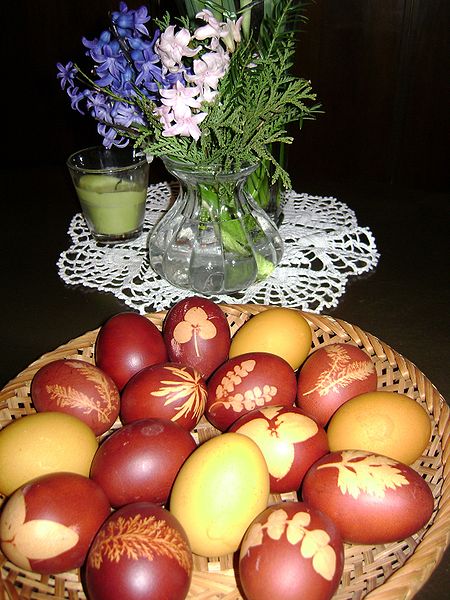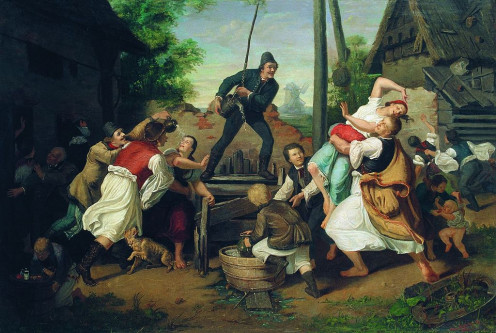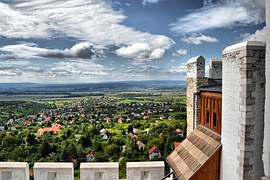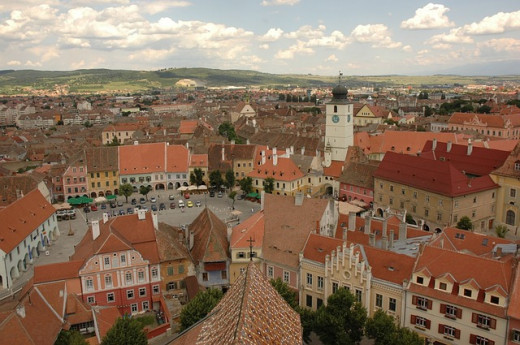Chicken Shortcake - A Hungarian Recipe

Hungarian Culture and Memories
I appreciate Hungary and Hungarian culture for many reasons, not only because my favorite vintage actor, Bela Lugosi, was born in that nation when his town became part of Romania. He was born in a part of Transylvania in 1882 in a town called Lugos, using the community's name instead of his own, Blasko, when he became an actor.
Lugosi did not envision that his most famous character would indelibly mark the theater-going populace with memories of Romania and the Carpathian Mountains - nor did he envision being type cast in that role.
Unknown to many people these days, Lugosi once portrayed Jesus Christ on the stage, a fitting memory for the Easter Season in which this Hub is written. Bela portrayed many characters besides his famous Dracula, whose voice made theater audiences gasp in the 1920s and 1930s and like his characters, the following recipe fits any time of year.
The cuisine of Hungary is flavorful and exciting and not only because of Hungarian paprika.
I look in the mirror and say to myself, Can it be you once played Romeo?
— Bela Lugosi
Hungarian Easter Eggs resemble one type of Romanian egg and traditional red Russian eggs of the season. Like some Russian eggs, the Hungarian version of the tradition is often dyed with yellow and red onion skins, which make powerful dyes.
- Everything You Need for Urban Chicken Raising from The Chicken Whisperer
If you keep chickens at home or would like to - or would like local legislation passed to let you do so, then The Chicken Whisperer is for you. - This Chicken Pie Has Legs!
Two recipes for chicken leg pie give you some new options for lunch and dinner. Pie birds and a video add to the fun.
Water Plunge Monday
In Hungary, the Monday following Easter Sunday is called Water Plunge Monday or Wet Monday, rather than Easter Monday celebrated in places like the UK and parts of America.
In Hungary, men and boys can follow a tradition of dousing women and teen girls with buckets of water on this Monday. On Tuesday, the females may turn the tables to douse the males. Said to bring about spring rains for crop production, the tradition is also an excuse to drench cute girls with water, often repeatedly throughout the day, but not so often as in some Polish American communities about which I have heard.
In certain towns in Wisconsin and New York, people can become pretty wet all day on Monday and Tuesday. In one town, it is said that girls are drenched with a bucket and then carried to a river for dunking first thing in the morning. Giving boys the decorated Easter Eggs is supposed to save the girls from drenching, but I think it probably does not work.
In Washington DC, the Whitehouse just has an Easter Egg Roll!

An Old Hungarian-American Feast
Preparing and eating Chicken Shortcake may be more fun for some of us than being drenched in water or thrown in a river during early spring.
The following recipe came from an out-of-print leaflet about 60 years old. Hungarian immigrants settled in several communities in Northeastern Ohio in the 19th and 20th centuries and brought many good recipes with them from their homeland. The recipe below is probably a version of a traditional dish, Americanized. The American South has its own version as well.
The particular recipe provided only the ingredients required to serve a large group, like the whole town or at least a church congregation. It listed:
- 40 pounds of Chicken
- 30 small boxes of Frozen Peas
- 12 cans Cranberry Sauce
- 3 large boxes of Baking Mix
- 17 small boxes of corn muffin mix
- 2 stalks of Celery.
The recipe below is a good modification for a family dinner, I think.
Musical Accompaniment: Hungarian folk music of Transylvania and Moldva
Please rate this recipe for Chicken Shortcake
Ingredients for Chicken Shortcake: 6 Servings
- 3 pounds Chicken, Cut up
- 1 tsp Sea Salt
- 1/2 tsp Fresh ground pepper
- 1 tsp Hungarian Paprika, or to taste
- 1 Medium Onion, peeled and cut in half
Instructions
- Place a cut up chicken in a heavy pot and cover with water. Turn stove burner to medium high heat.
- Add salt, pepper, paprika, and onion halves.
- Bring the pot to the boil and then lower heat to medium low. Simmer 60 to 90 minutes, until chicken falls off bone. Make sure to add enough water to end with at least 3 Cups of Chicken Stock.
- Remove pot from burner and let cool.
- Remove meat from bones.
While Chicken Simmers, Additional Instructions
- Take 1 Cup sliced mushrooms and sauté in a little olive oil in a heavy pot.
- Add 2 Tbsp flour and stir, then add 3 Cups of the stock in your chicken pot, and stir to thicken. Refrigerate any unused stock.
- Add 2 or 3 ribs of celery, chopped or sliced and stir.
- Add a pound of frozen peas, thawed, to the pot.
- Add chicken meat to the pot, breaking it into bite sized pieces and simmer on low heat. Taste and re-season if needed.
Meanwhile, prepare cornbread:
- 1 Cup Self Rising Cornmeal.
- 1 Cup Baking Mix
- 2 Eggs, well beaten before adding to other ingredients.
- 1 Cup Buttermilk
- 1 Tbsp Vegetable Oil
Mix all ingredients in a bowl until well combined. Place chicken mixture into a rectangular baking pan and top with the cornbread mixture. Bake at 350 degrees F about 45 - 60 minutes or until cornbread is done. (Glass pans require less cooking time than do metal pans.) Remove from oven and serve.
Serving suggestions:
Serve with cranberry sauce if you like, or with a green salad or fruit salad, and a plate of pickled vegetables.


© 2015 Patty Inglish MS MPH










